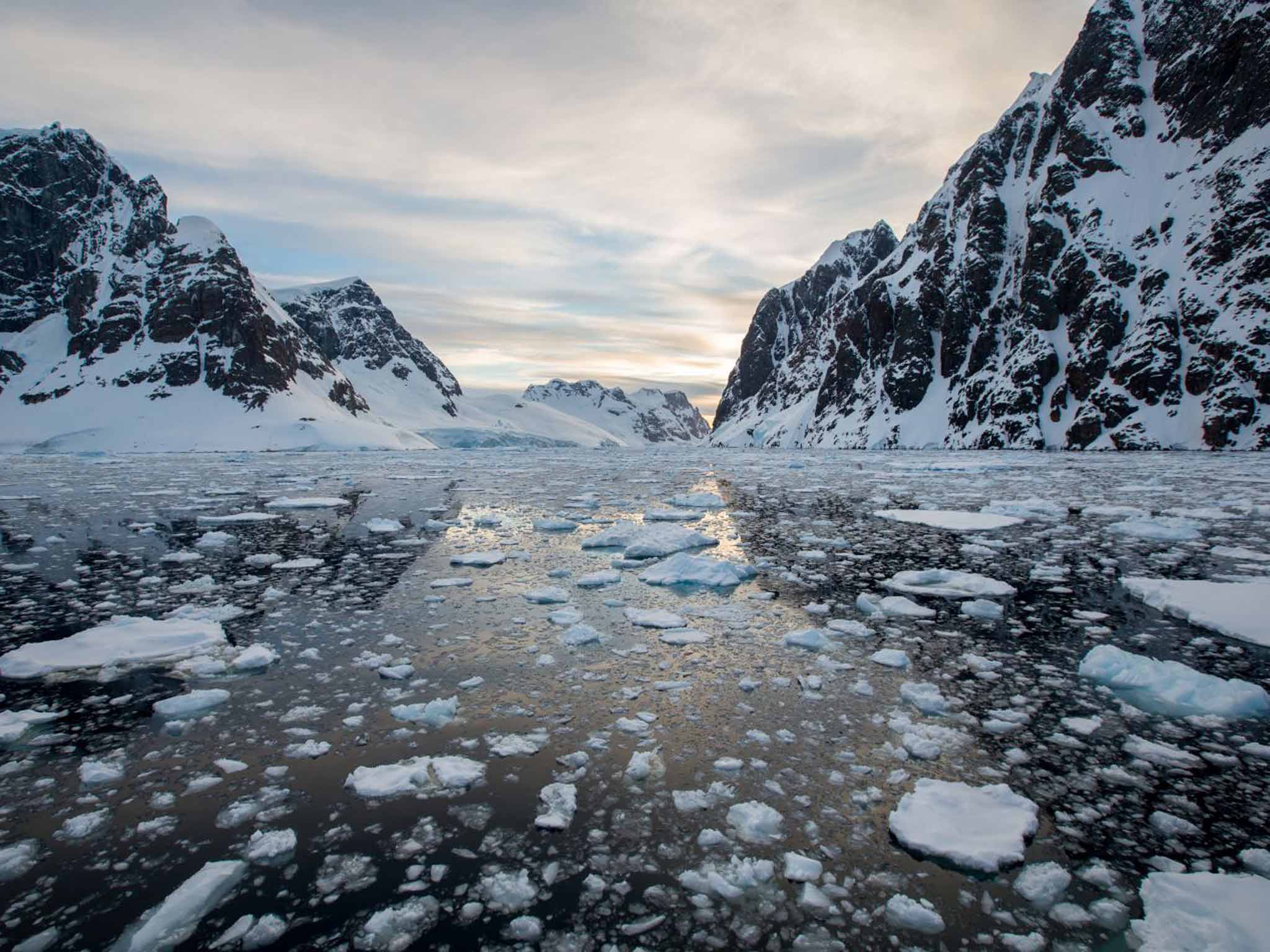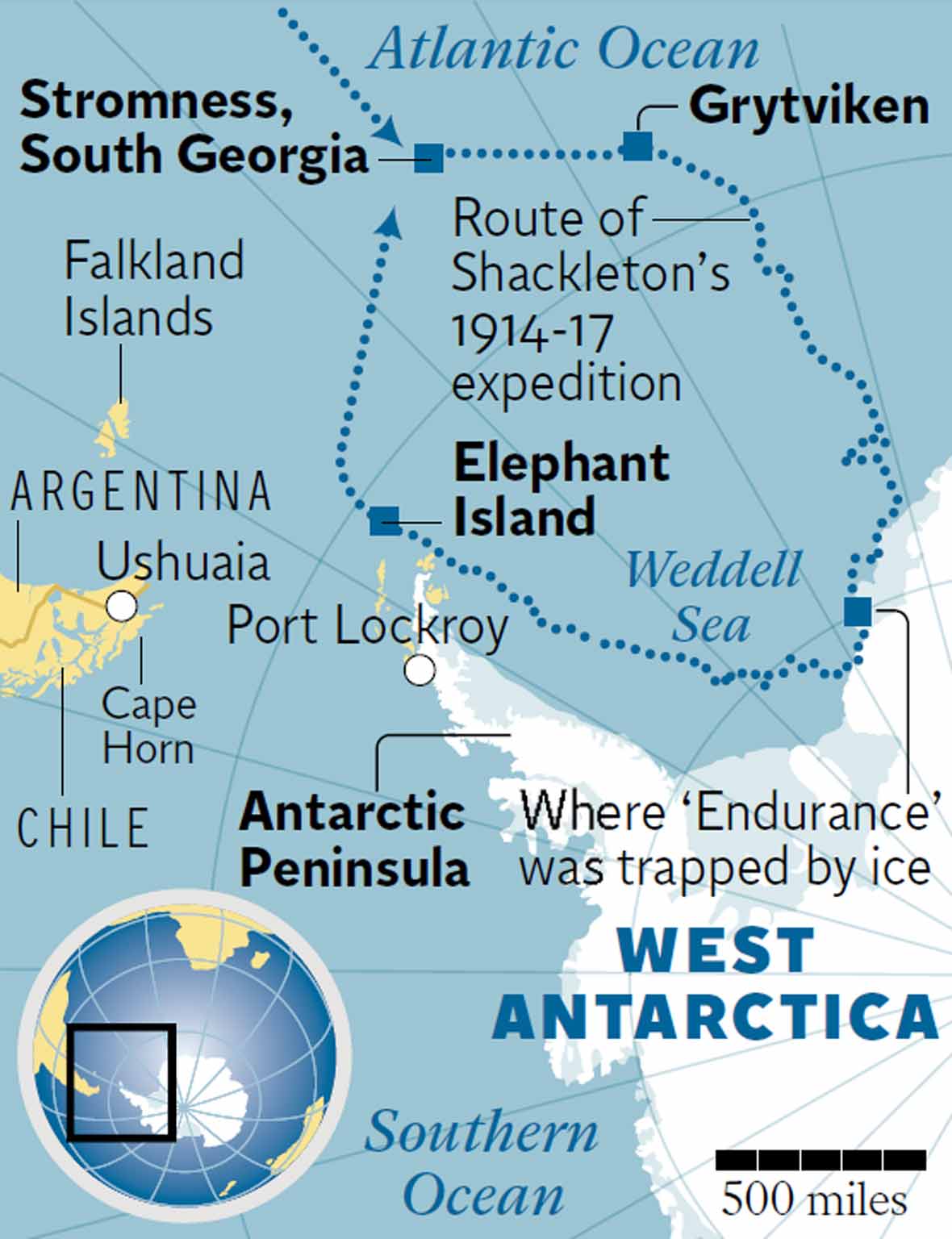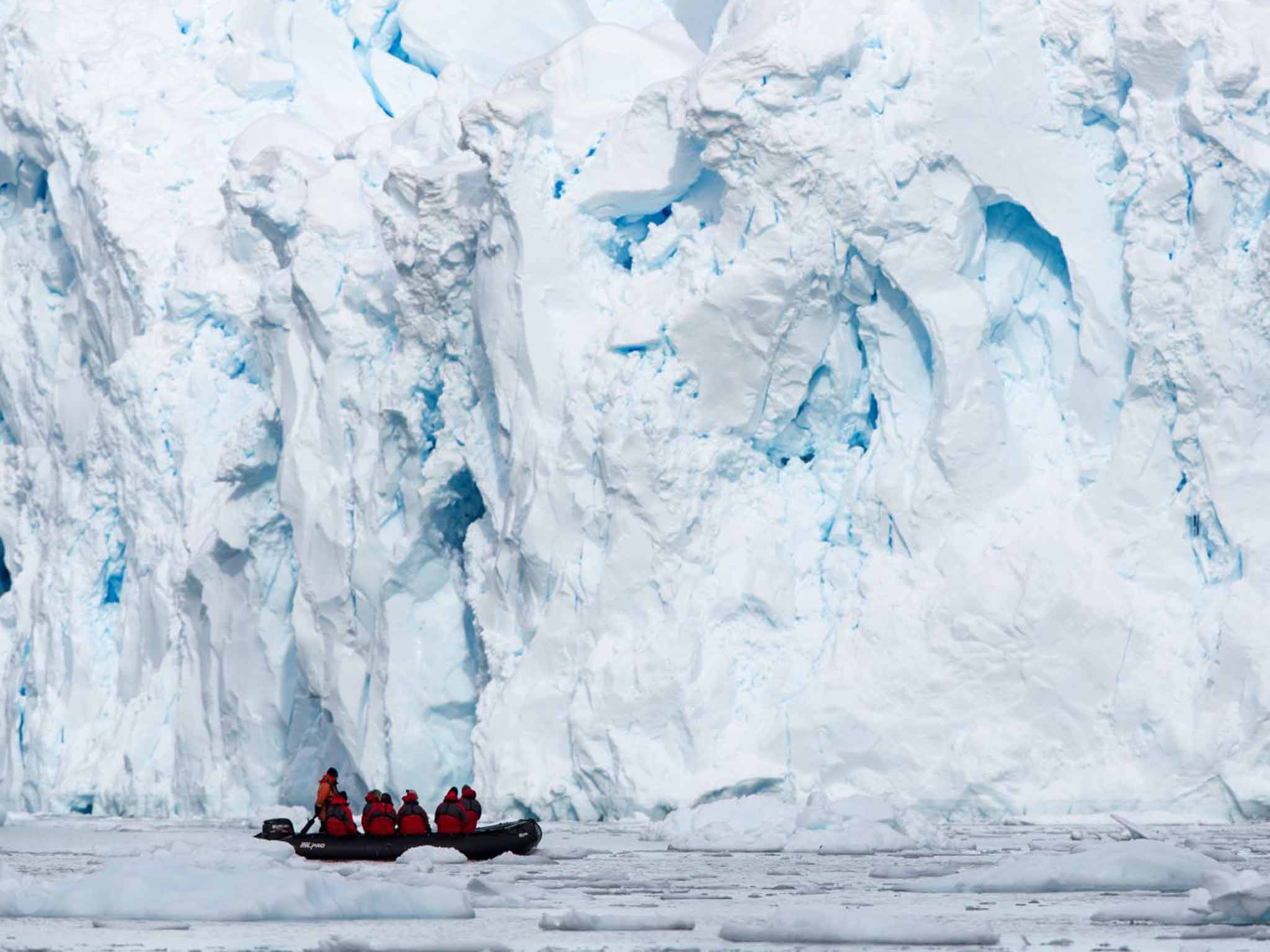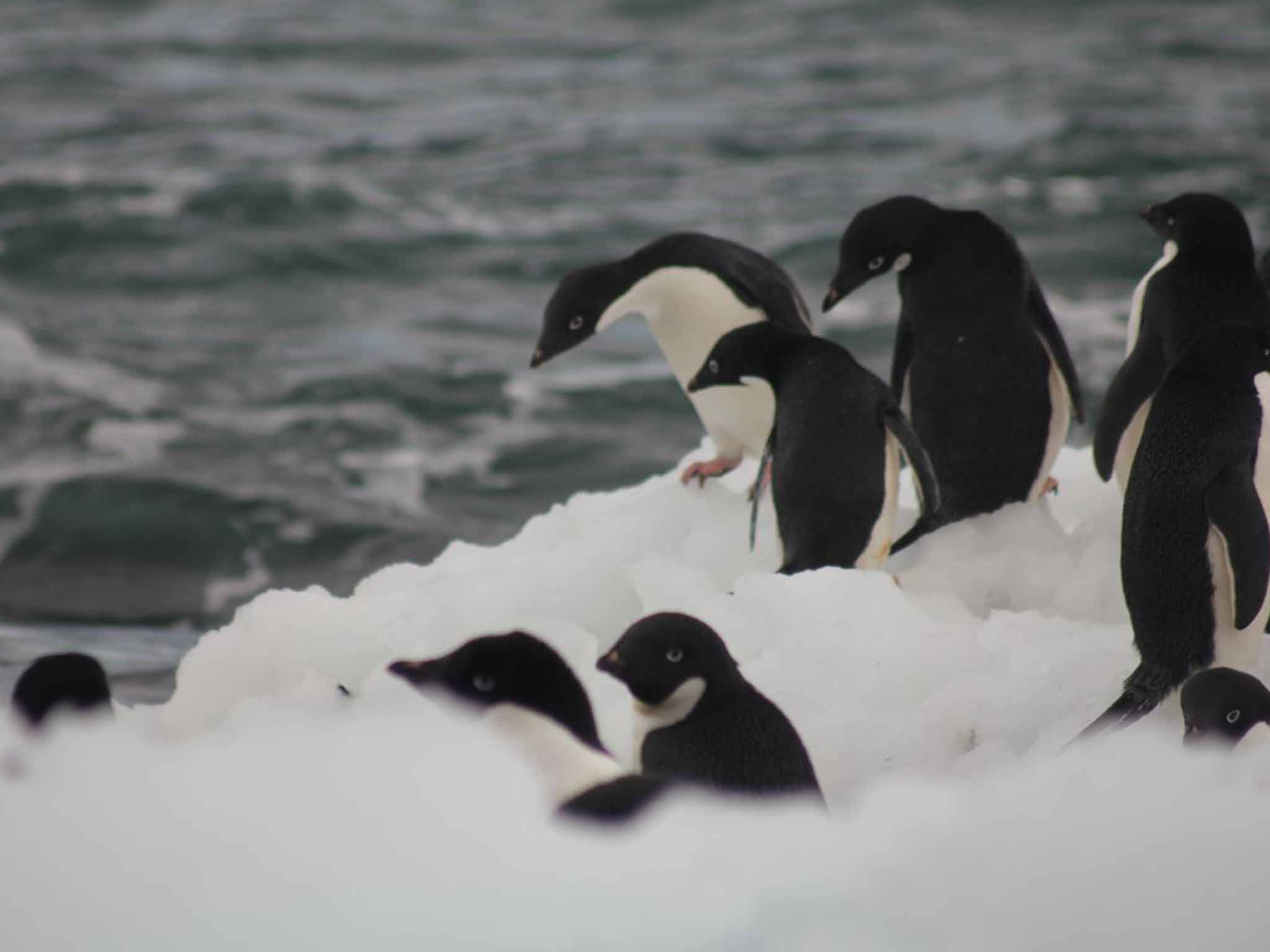Antarctica cruise: Explorer Rebecca Stephens follows Shackleton’s route
A century after Shackleton's 'Endurance' sank, mountaineer Rebecca Stephens and her daughter followed in his wake on a luxury expedition cruise

Your support helps us to tell the story
From reproductive rights to climate change to Big Tech, The Independent is on the ground when the story is developing. Whether it's investigating the financials of Elon Musk's pro-Trump PAC or producing our latest documentary, 'The A Word', which shines a light on the American women fighting for reproductive rights, we know how important it is to parse out the facts from the messaging.
At such a critical moment in US history, we need reporters on the ground. Your donation allows us to keep sending journalists to speak to both sides of the story.
The Independent is trusted by Americans across the entire political spectrum. And unlike many other quality news outlets, we choose not to lock Americans out of our reporting and analysis with paywalls. We believe quality journalism should be available to everyone, paid for by those who can afford it.
Your support makes all the difference.'Is it true?" asked a quizzical child, looking up at me. A posse of disbelieving little faces circled round, while our daughter Anna – aged seven at the time – looked on sheepishly. "Has Anna been to Antarctica?"
A few years earlier I had sailed to Antarctica to cross the island of South Georgia, by way of the route Sir Ernest Shackleton took on the final leg of his epic Endurance expedition of 1914-17. Communications were patchy then, and expensive. I made one satellite phone call home. "Any news?" I asked. "George Harrison is dead," said my boyfriend, as if the world itself had come to an end. It was November 2001, and I had just fallen pregnant with our first child. Has Anna been to Antarctica? Well yes, in a manner of speaking.
Fourteen years on Anna can answer that same question looking her friends squarely in the eye – once again, thanks to Shackleton. This year, and last – and next – is the centennial anniversary of Shackleton's Endurance expedition on which he determined to make the first crossing of the Antarctic continent. To mark the occasion, high-end adventure cruise operator Silversea Expeditions has created a number of special Shackleton voyages in association with the Royal Geographical Society. As an ambassador for the Shackleton Foundation, I was fortunate enough to be invited along; and with a spare berth in my cabin, Anna was my obvious choice of companion.
It was one of the longer Silversea voyages – 18 days to cover a triangular route of 3,500 nautical miles from Ushuaia in Argentina to the Falkland Islands and South Georgia, south to the Antarctic Peninsula and north again across the dreaded Drake Passage to Ushuaia. We were to visit various Shackleton sites, with a series of lectures on the Heroic Age of Antarctic Exploration (thank you, Victoria), as well as the starkly beautiful frozen world around us, and the natural history.
Outside the lecture room, it came to life. We were resting in our cabin when it was announced that there were whales off our stern, and the ship would be turning for a closer look. Anna was up on deck before she could grab shoes and socks.
The sea was calm, and there, beside the ship, was a humpback whale, turning on its side to show its white underbelly. There were five or six more whales, emerging from the depths, blowing and fashioning perfect arcs with split tail flukes. We can be grateful these extraordinary creatures are now protected in the waters around South Georgia. A century ago there was demand for whale oil and a man with few prospects at home could labour for two years in the South Atlantic and save enough to buy a farm. But the industry was brutal, as we could easily imagine, walking through the rusty winches, ramps, blubber cookeries and pressure cookers of Grytviken whaling station on the north coast of South Georgia, today stripped of asbestos and any dilapidated corrugated iron that might be picked up by gusting winds and strike a passerby.

It was from South Georgia that Shackleton sailed south to the Weddell Sea. The Norwegian whalers warned him there was an unusual amount of pack ice that year.
"Are you saying it's impossible?" asked Shackleton.
"No, very hard."
"Well it's impossible to return to England so we'll settle for very hard."
We, too, encountered more ice than in an average season. On the afternoon of the last Thursday in November (I remember, because in the evening Anna and I enjoyed our first Thanksgiving turkey with new American friends), the captain sailed the ship into the Antarctic Sound off the tip of the Antarctic Peninsula in search of vast tabular icebergs – broken sections of ice shelf, flat on top, like airstrips. Stunningly, they are swept with the currents from the Ross Ice Shelf on the far side of the continent. Our expedition leader, Kara, said it was at least a decade since she'd seen so many, which provided some entertainment in the dining room as the ship slalomed between them, stabilisers lifted high, dinner plates flying and glasses smashing with a decorative, festive crash.
The next evening the captain steered a course from Port Lockroy, with its quaint museum and post office operated by the Antarctic Heritage Trust, through the narrow Lemaire Channel. The sheltered waters were still, quiet and, with steep cliffs either side, fjord-like. And as we enjoyed our dinner with views through the panoramic windows, it was impossible not be fascinated by the ever-denser jigsaw of pack ice all around. I excused myself, dashed to my cabin for a camera and up to the bow. Damn. Forgot the jacket. It must have been sub-zero and I stood shivering in a silk shirt, marvelling at the splendour and dynamics of this ice-clad wilderness. The child in me hoped the jigsaw pieces would freeze together and we'd be stuck. Now that would be an adventure! But then we turned and headed for open water.
Shackleton, on the other hand, had a mission, and sailed on. His worst fears were realised when on 18 January 1915, the expedition ship Endurance was surrounded by ice and drifted at the mercy of the currents and winds, through the long winter months of total dark. By late October, Shackleton and his men were forced to abandon ship and, on 21 November, they watched as it was "crushed like matchsticks" before their eyes, and sank. Shackleton's ambition to cross the Antarctic was shattered, replaced, by necessity, with determination that he and his 27 crewmen should survive. His optimism, and his rare capability to boost and sustain morale through the darkest hours, won him the reputation among many as "the greatest leader that ever came on God's Earth, bar none".
They camped over five months on the ice, before the thaw released them into the open water and they rowed seven days to the first outcrop of land – Elephant Island. We had the good fortune to sail close enough to this dark, jagged rock that we could virtually reach out and touch it, but not land. Kara explained how in 135 trips south she had only three times been able to land on the island, so exposed is its tiny strip of beach and so ferocious the weather.
It was the only landing, bar one, that we unable to make. Otherwise we were in and out of Zodiacs, and were privileged to witness some of the richest colonies of wildlife on the planet. We saw penguins – rockhoppers, gentoos, macaronis, adélies, chinstraps, kings – in their tens of thousands, waddling, sliding, sitting on eggs, diving in and out the water, building nests, a male presenting a prized pebble to his mate. Also, elephant seals and fur seals. The male fur seal, arched tall with his thick furry neck, is the one to look out for. Just days after we picked a path through a beach full of them, there was report of a British man bitten by one in South Georgia and air-lifted for treatment in the Falklands.

We walked at a safe distance from the rusty relics of whaling stations at Stromness on South Georgia, and on Deception Island, in the South Shetlands. Elephant Island – with no whaling station, and a good distance from any shipping route – wasn't a place Shackleton and his men could survive for long. With five members of the crew, Shackleton took one of their three boats, the James Caird, and made a bid for South Georgia, 800 miles to the north and east. We'd sailed it over two days in the Silver Explorer with comfy beds, full dining service and butlers. Shackleton sailed it in a 23ft whaler. The final leg was to climb over South Georgia's uncharted mountains and glaciers, from King Haakon Bay to Stromness – where there were human beings, and help. He returned to Elephant Island and not a single man was lost. Shackleton's second-in-command, Frank Wild, had been left in charge of 22 men, marooned and waiting for rescue. Four and a half months, they waited – sleeping under an overturned boat.
I asked our historian, Victoria, whether Shackleton had talked with Wild of a contingency plan, should Shackleton fail to return to Elephant Island. Yes, she said, there was a plan to sail to Deception Island, and maybe bump into a whaler en route. The distance was shorter than to South Georgia, but against the currents and the prevailing winds. The men would have been weak; and the two remaining boats, recovered from a makeshift shed. Unlikely that they'd have had a chance, I suggested. Yes, she agreed, unlikely.

Getting there
Silver Explorer sails from Ushuaia, Argentina, on an 18-day round trip on 22 December 2016. Prices start at £17,150pp. Prices, including flights, start at £19,289 with a one-night hotel stay (0844 251 0837; silversea.com).
More information
The Royal Geographical Society is showing Enduring Eye, an exhibition exploring the legacy of Shackleton and photographer Frank Hurley, until 28 February (020 7591 3000; rgs.org).
The Shackleton Foundation provides funding and support to aspiring leaders and social entrepreneurs (shackletonfoundation.org).
Rebecca Stephens delivers lectures and workshops on lessons learned from Shackleton's leadership style (rebeccastephens.com).
Join our commenting forum
Join thought-provoking conversations, follow other Independent readers and see their replies
Comments